Gatis Ābelītis is a category B1 certified maintenance technician with over ten years of experience in his job. Prior to his career as a technician at airBaltic, he studied logistics and telematics. Gatis joined airBaltic in 2008, when the airline was recruiting trainees for its technician apprentice programme. Over the years, he has continued to study and advanced from a Category A Licence necessary to carry out minor maintenance tasks to a B1 License for more complex procedures. As things now stand, the EASA Part-66 Aircraft Maintenance License (AML) catogory B1 entitle him to carry out maintenance, including work on the airframe, engines, and other aircraft systems.
Gatis has been involved with auto racing since high school. Because of this hobby, as well as his interest in technical details, he decided to pursue a career in aviation maintenance and repair. Motorsport is arguably one of the most technically advanced and adrenaline-pumping hobbies. Gatis has been competing in motorsport for many years, and his results are spectacular: last year he won first place in the Latvian Cup in the minirally 1600 class and took second place in the Latvian Cup in the autosprint 1600 class.
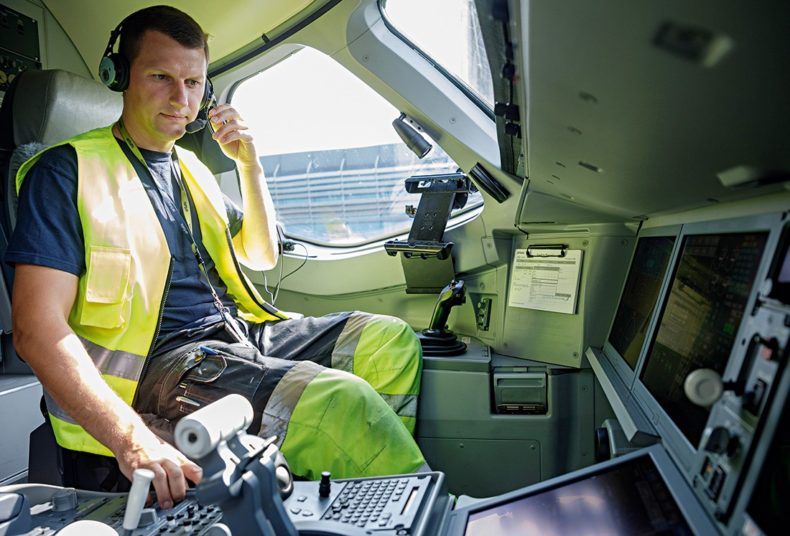
To carry out any operations on the ground and move an aircraft from one parking space to another, the maintenance technician first needs to get in touch with the air traffic control tower and ask for permission.
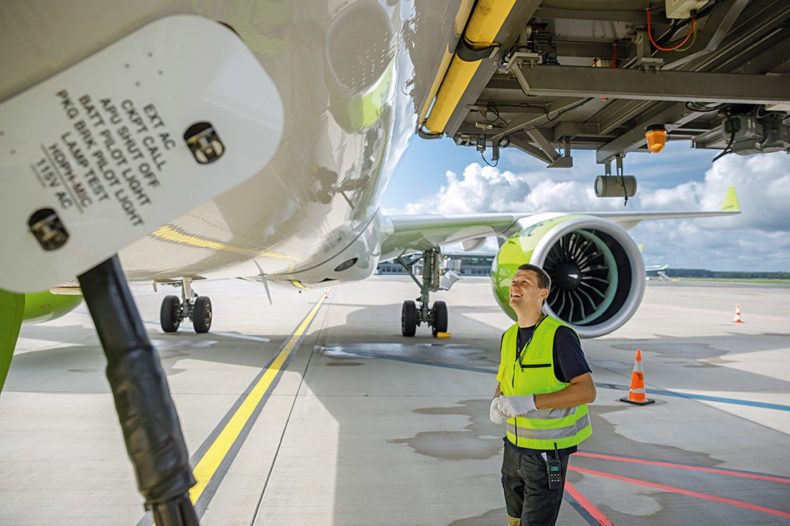
One of the day-to-day tasks for maintenance technicians is a daily check of the aircraft’s exterior and interior prior to its first flight. This involves a walk-around inspection of the aircraft to visually inspect the airframe, replenish oil and hydraulic fluid levels, and check safety and cleanliness of the flight deck.
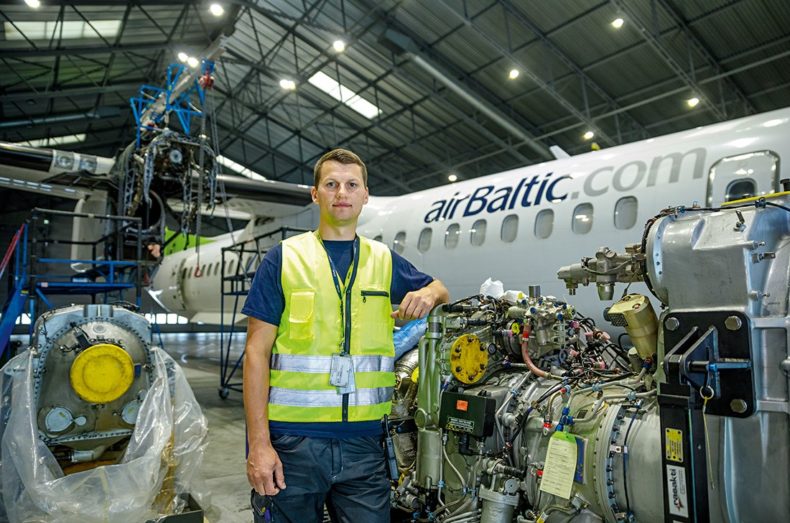
Depending on the type of maintenance activities, a technician must hold a specific licence. This largely depends on self-development and career goals. However, one does not need previous experience in aviation to begin a career in aircraft maintenance. Step by step, after spending hours studying and carrying out maintenance tasks, technicians must pass certificate exams regulated by the European Aviation Safety Agency. On average, a B1 certificate can be obtained in three years, provided the candidate has studied aviation, or in five years if the candidate has no technical background. Also, a type rating course is required to certify that the maintenance technician can work on a particular type of aircraft. Licenses are valid for five years and must then be renewed.
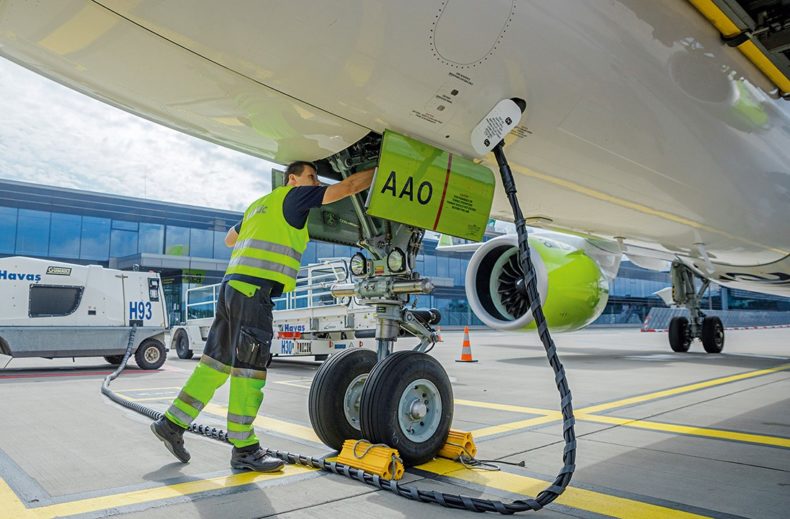
A special inspection checklist lists every single step to take during the daily check in order to prepare the aircraft for take-off. Here, the technician is inspecting the front landing gear. The next step is to make a general visual inspection of the tires for any cuts or cracks.
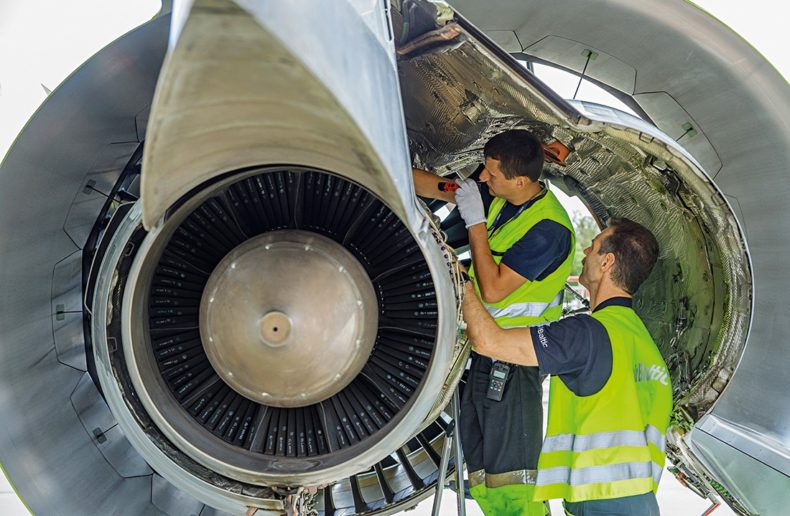
To get things done effectively, you need to be a good team player and trust your colleagues and their expertise. About 10–15 people usually work together on the day shift, but that number doubles at night, when the airline performs most aircraft maintenance checks. Altogether, airBaltic’s maintenance team numbers around 130 people, most of whom are based in Riga, Latvia.
The work schedule changes due to rotating shifts, but employees usually work four days and then take four days off. The shift-work schedule gives them greater flexibility and more time off.
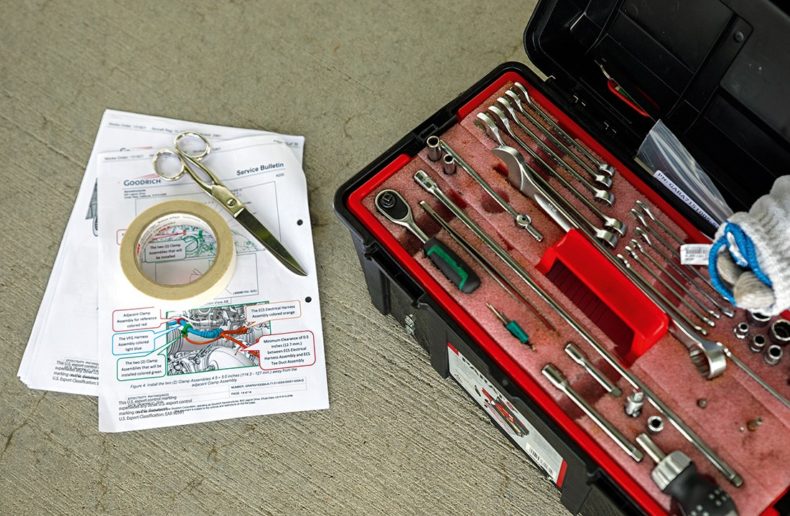
Technical manuals and documentation, as well as a toolbox, are essential to perform aircraft maintenance. For example, documentation for planned work provides critical technical details and visualisations for the steps that need to be taken. In the case of engine wiring harnesses, the aircraft manufacturer recommended installing an additional clamp.
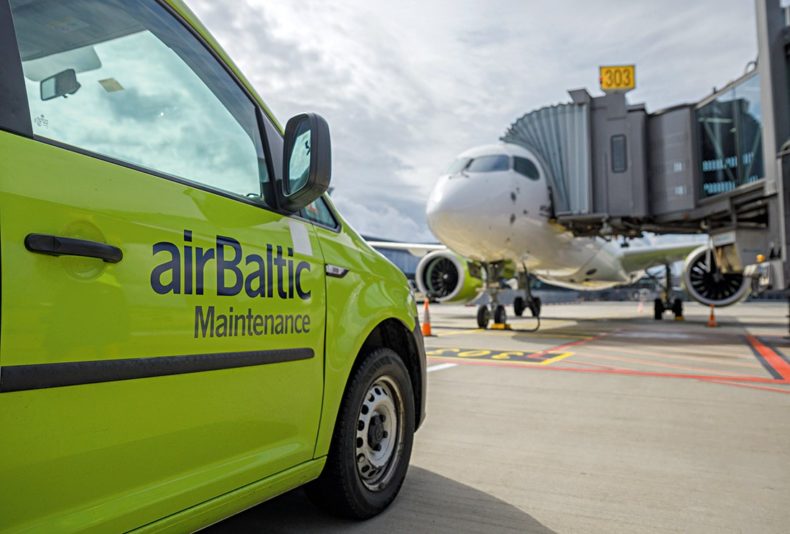
Maintenance technicians also have the opportunity to gain experience abroad at other international airports across Europe and support airBaltic’s aircraft network. For example, Gatis did maintenance work at Tallinn Airport for two weeks in August.
To become a licensed aircraft technician, a candidate should have received basic training and examination in various subjects called ‘modules’ and gained basic practical experience. Approved basic training providers in Latvia are RTU, TSI, and RAI. airBaltic has a specialised apprenticeship development programme to gain basic practical experience on our aircraft under the supervision of experienced staff. The most promising candidates may receive airBaltic support to cover basic training expenses. Check the airBaltic Careers page careers.airbaltic.com for details and open vacancies.